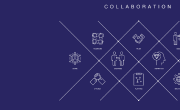Autumn 2019 | What does unified modeling mean to you? Perhaps an obvious meaning is that “unified” implies one single model: one choice for dynamics, physics, data assimilation, and postprocessing. Everyone uses the same code: universities, private companies, research labs, and operational prediction centers. It is a grand vision. As a community, we are not there yet. I argue that there is a more practical, and potentially more useful definition of unified modeling: codes are easily shared and interoperable. Why do I say this? At… Read More
Who's Who: Kate Fossell
Autumn 2019 | Tell us a little about yourself and your career path. I’m a Wisconsin native and grew up fascinated by severe storms. Naturally, when it came time to think about college, I looked for meteorology programs in the midwest. I settled on Saint Louis University for my B.S. in Atmospheric Sciences and then earned my M.S. in Mathematics from the University of Wisconsin - Milwaukee (UWM). After graduation, I stayed on at UWM as a researcher while also working for a UWM-affiliated meteorological consulting company called… Read More
Visitors: Using Machine Learning to Post-Process Ensemble-based Precipitation Forecasts
Visitor: Eric Loken
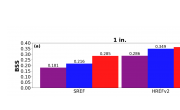
Autumn 2019 | Ensembles are useful forecast tools because they account for uncertainties in initial conditions, lateral boundary conditions, and/or model physics, and they provide probabilistic information to users. However, many ensembles suffer from under-dispersion, sub-optimal reliability, and systematic biases. Machine learning (ML) can help remedy these shortcomings by post-processing raw ensemble output. Conceptually, ML identifies (nonlinear and linear) patterns in… Read More
Community Connections: Container & CCPP AMS Short Courses
Autumn 2019 | One of the primary goals of the DTC is to provide software and infrastructure that aid in transitions between the research and operational communities. The American Meteorology Society (AMS) provides an ideal venue for sharing these tools with the community through the AMS short course offerings at the Annual Meeting. The DTC is looking forward to presenting two short courses at the 100th AMS Annual Meeting in Boston, MA in January 2020. “Integrating Numerical Weather Prediction (NWP) System Components… Read More
Did you know?: METplus
Expanding Verification Capabilities Beyond the Basics
Autumn 2019 | The Model Evaluation Tools (MET) were developed and released to the community by the Developmental Testbed Center more than a decade ago. At that time, the tools included computation of traditional statistics for continuous fields (temperature, pressure, and height) and dichotomous fields (precipitation, clouds, fog, and high impact events). MET also included a spatial verification method, using objects, which complemented traditional statistics. Over the past five years, new flexibility and… Read More
Announcement: Experimentation and Development of Physical Parameterizations for Numerical Weather Prediction Using a Single-Column Model and the Common Community Physics Package (CCPP)
AMS Short Course

2019-10-11 | The AMS Short Course on Experimentation and Development of Physical Parameterizations for Numerical Weather Prediction Using a single-column model and the Common Community Physics Package (CCPP) will be held on 12 January 2020 preceding the 100th AMS Annual Meeting in Boston, MA. Preliminary programs, registration, hotel, and general information will be posted on the AMS Web site. The goal of this course is to familiarize participants with new tools for experimentation and development of physical… Read More
Announcement: Short Course on Containers and Cloud Computing at AMS Annual - 12 Jan 2020
AMS Short Course

2019-10-10 | The Developmental Testbed Center (DTC) will host a short course on Integrating NWP System Components Using Container Technology and Cloud Services on 12 January 2020 preceding the 100th AMS Annual Meeting in Boston, Massachusetts. The goal of this course is to raise awareness about tools and facilities available to the community for testing and evaluating Numerical Weather Prediction (NWP) innovations, including the emerging set of software tools in reusable containers and cloud computing resources, through hands-on… Read More
Software Release: Announcing UPP V4.0.1 Bug Fix Release

2019-08-21 | Dear UPP Community, The Developmental Testbed Center (DTC) is pleased to announce the release of the Unified Post Processor Bug Fix Version 4.0.1. Significant bug fixes include: FV3GFS processing fix: Modified input format for processing FV3GFS data. Users should use UPPV4.0.1 for all FV3GFS processing. Previous versions are now considered legacy for FV3GFS. Users should use 'binarynemsiompiio' instead of 'binarynemsio' in their run script. The binarynemsio format option will not be supported in the future. Scripts in… Read More
Software Release: METplus 2.1.1 and MET 8.1.1 Bugfix Releases

2019-07-08 | Bugfix releases for both METplus version 2.1 and MET version 8.1 are now available. METPLUS 2.1.1 MAY BE OBTAINED ON GITHUB. MET 8.1.1 IS AVAILABLE FOR DOWNLOAD FROM THE MET USERS WEB PAGE.
Software Release: Common Community Physics Package (CCPP) v3.0 Release

2019-06-17 | The Common Community Physics Package (CCPP) v3.0 was publicly released in June 2019. The CCPP contains a library of physical parameterizations (CCPP-Physics), and the framework that connects it to host models (CCPP-Framework). In this release, the CCPP has been bundled with the Global Model Test bed (GMTB) Single Column Model (SCM) v3.0. The CCPP-Physics is envisioned to contain parameterizations used by NOAA operational models for weather through seasonal prediction timescales, as well as developmental schemes under… Read More
Bridges to Operations: Advanced Physics Testing
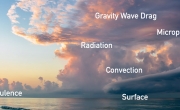
Spring 2019 | With funding from the Next Generation Global Prediction System (NGGPS) initiative and broad support from the community, the National Centers for Environmental Prediction (NCEP)/Environmental Modeling Center (EMC) recently replaced the dynamic core in its flagship operational model, the Global Forecast System (GFS). Version 15 of the GFS (GFSv15), implemented in operations on June 12, 2019, includes the Finite-Volume Cubed-Sphere (FV3) non-hydrostatic dynamical core in place of the long-running spectral hydrostatic core… Read More
Software Release: METplus 2.1 with MET 8.1 and METviewer 2.10 components

2019-05-03 | The Model Evaluation Tools (MET) development team at the DTC is pleased to announce the release of a multi-component verification capability called METplus. It includes METplus version 2.1, MET version 8.1 and METviewer version 2.10. METplus contains a suite of Python wrappers and ancillary scripts to enhance the user's ability to quickly set-up and run MET. METviewer is a database and display system for aggregating and plotting MET output. In the future, a user will be able to check everything out through the METplus… Read More
Lead Story: NOAA and NCAR partner on new modeling framework
NCAR and NOAA MOA
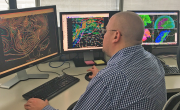
Spring 2019 | NCAR and NOAA are each adopting a unified approach to coupled environmental modeling, where success for both efforts is critically dependent on community contributions. At the end of January 2019, NCAR and NOAA signed a Memorandum of Agreement (MOA) to develop a shared infrastructure that encourages the broader community to engage in improving the Nation’s weather and climate modeling capabilities. Collaborating on the development of a common infrastructure will reduce duplication of effort and create common community… Read More
Director's Corner: The Operational FV3 Era
Clark Evans
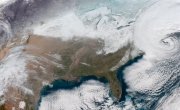
Spring 2019 | We stand at the dawn of the operational FV3 era, representing the first step in the implementation of NOAA's Next-Generation Global Prediction System (NGGPS). With this new era comes many challenges, but also many opportunities to work collaboratively to improve the operational modeling system. How can NOAA best work with the community to leverage these opportunities and develop a truly world-class weather and climate prediction system? A few ideas: Develop a decadal vision for world-class numerical weather prediction.… Read More
Who's Who: Gerard Ketefian
Spring 2019 | Gerard Ketefian tries to “get big computers to tell him if it’s going to be sunny or rainy or snowy tomorrow, and the next day, and the day after that, and…” that’s how he explains his job to a child - and he has two -- a 2-year old boy and 4-year old girl. Gerard’s background is engineering. He has a B.S. in civil and mechanical engineering and M.S. in environmental engineering with emphasis on environmental fluid mechanics (both air and water). Gerard’s Ph.D. involved computational fluid dynamics applied to atmospheric… Read More
Pagination
Copyright © 2024. All rights reserved.
